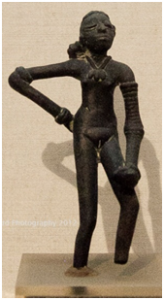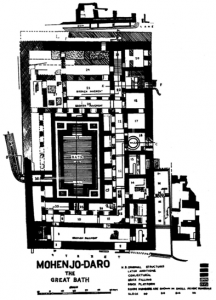INDIAN GAMES
By Soumya Manjunath Chavan
India is a land of many arts, thoughts and so also games. It has a rich heritage of games some lost through times but some still living and inspiring people all over the world. The concept of games finds a unique development through the Sindhu Saraswathi civilizations, the Vedic period and mention of many games are made in the Indian epics also. A comprehensive view of the idea of games and sports finds interest here and discusses its presence through the times.
Abstract
Games are a natural activity that one engages in for amusement and the number of games that are in practice today are countless. It further moves to be competitive and entertaining also. Every country has its own indigenous games of which some influence other people and countries. Whereas some remain as the source of inspiration and undergo several transformations to still remain as a cultural part of the land. While there are yet other games which lose its practical applications over a period of time and become a part of history.
The History of sports and games is a part of the History of man as a social animal, his interrelations with other individuals and groups, his civilization and culture, and specially his play. In ancient India a holistic growth and development of a person was designed through education and introducing good exercise for keeping the body, mind, intellect and soul in a rejuvenated state. Games and sports were means of the physical development and sometimes used for defense also. Leisure is one of the great gifts of civilization to man; games and sports fill that leisure with joy Along with this the games were treated as interesting for an overall development of children and recreation amongst the adults. Some of the significant games included the indoor games like the board games, games with stones and naturally available materials and playing cards. The outdoor games included water sports, archery and martial arts.
Game has many synonyms as play which is difficult to define. As Subodh Kapoor defines “Play demands nothing, play is innocence. Play is creativity. Play transmits no academic or social skills. It encourages an aesthetic appreciation of the world. When the reason for playing is to win, the play ceases to be a pastime or leisure.” Game defined in the Oxford dictionary is a form of competitive activity or sport played according to rules. The Merriam Webster’s dictionary defines sports as something to amuse oneself’. In the Indian perspective the concept of games can be analyzed from two viewpoints. The first one is the understanding of the cosmos as a game or leela and the other being games as an action of pastime, recreation and a contest.
Game –as play or the Cosmic Leela
Leela or Kreeda are two words which are close to the words games and ‘play’. The philosophy, spirit and cultural dimension of Indian games is extended into Kreedas, Leelas, Vinod and Utsavas. The Sanskrit word Lila is defined as a play, sport, diversion, amusement, pastime, child’s play, ease of facility in doing anything, a synonym Krida also means play, sport, amuse one’s self or gambol. Lila also defined as the divine ‘stage’. Lila, understood as play, wealthier than the word, extends to mean divine play embracing the play of creation, destruction, and re-creation the feat of the folding and unfolding of the cosmos. Lila, free and deep, is both the delight and enjoyment of this moment, and the play of God. Indian philosophy considers the Cosmos as the playground of the Divinity and the Earth as the playground of Man.
The Lalitasahasranama (Thousand names of the Goddess described in the Brahmanda Purana) in its one thousand names devoted to the goddess Tripurasundari explicates in the name numbered 648 – lilaklptabrahmandamandala – As to the one who formed the world systems as if it were a sport, ie. Meaning, She created the cosmos as if it were a game. In another name numbering 965-966 – mention is made as Balalilavinodini – meaning a Girl who is fond of the lila or the cosmic play. Tripura–siddhanta also says, “O beloved one, as thou dost play like a child thou art called Bala” (child). Taking pleasure in amusement, lila, the play (of the activity) of the universe. Similar epithets are mentioned in the writings of Vaishnava texts, especially among the Gaudiya Vaishnavas (Bengal school founded by Caitanya), the contemplation of divine sports (lilas) according to eight praharas (units of three hours each) like, Japa (almost silent chanting of a mantra), Vrata (fasting and other vows), dana (alms giving), snana (holy dip), visarjana (immersion) of the image is prescribed.
The Indian perspective of creation as lila or the cosmic play is in one way or the other an inspiration to the development of some of the Indian games. The games can be understood as a purpose of leisure, amusement and pastime. India has been the source of many games, which were later spread to others parts of the world.
Indian Games through the ages:
A development of a rich heritage of games in India can be observed through the archaeological excavations of Mohenjo-daro and Harappa, the Vedic literature, Ramayana and Mahabharata, the Puranas, the literary works of Kautilya, Kalidasa, Panini and Dandin as well as a whole lot of Buddhist and Jain literatures. In the Indus valley civilization (3250 BC to 2750 BC) many references of games and pastimes are found. An interesting example of a pastime can be seen as the famous figurine of the dancing girl as shown in Fig 1 measuring about 4 in. in height found in the Mohenjo-daro remains, speaks about the fact that dancing and singing were very good pastimes of this civilization.
One of the remarkable buildings, unearthed at Mohenjo-daro is a public bath or swimming pool. The swimming pool covers an area of about 12,000 sq.ft. This bath, which was rendered watertight, is provided with steps leading down to the water, and several rooms adjoining the swimming pool obviously served the bathers to change clothes before and after bathing. Ingenious arrangements for filling and emptying the pool are provided. The pool which remains to this day speaks about the engineering skill of the people of the Indus valley as depicted in the Fig 2. The existence of a public swimming pool with flights of steps on the ends, similar to our modern pools, warrants us to the conclusion that these people who lived in the far off centuries indulged in swimming and water-sports. All evidences point out that the swimming bath existed for public use.
Besides the water sports, marbles, balls and dice were used for games and dicing was the important game as is evident from lots of dices unearthed shows that the Indus people were fond of dice. Besides, a type of board game resembling the modern chess was also prevalent. A cylindrical gamesman resembling the present-day game of Draught has also been excavated at Harappa.
Hunting was the next important game. Seals showing men using bows and arrows for killing wild boars and deers have been found. Punching or boxing was also played. A number of toys of children made of clay have been found which shows that children engaged themselves with lots










